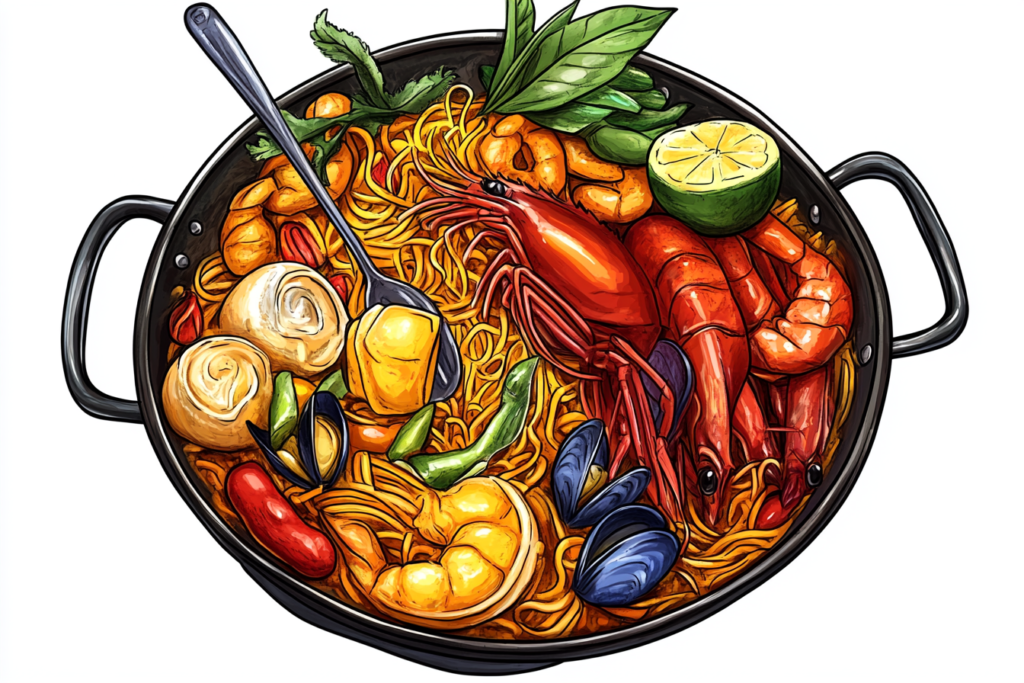A Cuisine Shaped by History and Identity
Catalan cuisine is more than just food—it’s a declaration of identity. For centuries, Catalonia has maintained its own language, traditions, and distinct culinary culture, even under political suppression. The region’s first recorded recipes date back to the 14th century in the Llibre de Sent Soví, one of Europe’s oldest surviving cookbooks. These recipes reveal a sophisticated Mediterranean kitchen, blending Roman, Greek, and Arab influences with local ingenuity.

 During Franco’s dictatorship, when Catalan culture was actively suppressed, food became an act of quiet resistance. Families preserved recipes passed down through generations, ensuring that dishes like escudella i carn d’olla (a hearty meat and vegetable stew) or pa amb tomàquet (tomato-rubbed bread) remained alive. Today, Catalan cuisine stands as a testament to resilience—a living archive of flavors that refuse to be erased.
During Franco’s dictatorship, when Catalan culture was actively suppressed, food became an act of quiet resistance. Families preserved recipes passed down through generations, ensuring that dishes like escudella i carn d’olla (a hearty meat and vegetable stew) or pa amb tomàquet (tomato-rubbed bread) remained alive. Today, Catalan cuisine stands as a testament to resilience—a living archive of flavors that refuse to be erased.




The Landscape on a Plate
Catalonia’s geography is its greatest chef. The Pyrenees provide wild mushrooms, game, and rich dairy; the fertile plains yield olives, almonds, and vineyards; the Mediterranean offers an abundance of seafood. This diversity gives Catalan cooking its unique character—dishes that are at once earthy and briny, rustic yet refined. Readability
Readability



The Flavours That Define Catalan Cooking
Catalan cuisine thrives on contrasts. Sweet and savoury mingle effortlessly—spinach with raisins and pine nuts, duck with pears, or the iconic bacallà amb samfaina (salt cod with roasted vegetables). Yet for all its bold pairings, the focus remains on pristine ingredients, treated simply to let their natural flavors shine.




From Peasant Food to Avant-Garde
Catalan cuisine has always balanced tradition and innovation. On one end, there’s escudella, a peasant stew so essential it’s called “the mother of Catalan cooking.” On the other, there’s Ferran Adrià’s elBulli, where culinary boundaries were shattered with foams and liquid olives. Yet even Adrià’s experiments drew from Catalan roots—his deconstructed pa amb tomàquet was a playful nod to the humble tomato bread.
Today, chefs like the Roca brothers (Celler de Can Roca) and Carme Ruscalleda continue this dialogue between old and new.


The Threats and Triumphs of a Living Cuisine
Despite its global acclaim, Catalan food faces challenges. Mass tourism in Barcelona has led to watered-down versions of classics while younger generations drift from time-intensive traditions. Yet there’s also a vibrant movement to safeguard authenticity—farmers reviving heirloom beans, bakers crafting slow-fermented pa de pagès (country bread), and a new wave of chefs reimagining botifarra (Catalan sausage) with organic, locally sourced pork.

 Wine, too, plays a crucial role. The Penedès region’s sparkling cava and Priorat’s bold reds are gaining international recognition, while natural winemakers in Empordà are pushing boundaries with minimal-intervention techniques.
Wine, too, plays a crucial role. The Penedès region’s sparkling cava and Priorat’s bold reds are gaining international recognition, while natural winemakers in Empordà are pushing boundaries with minimal-intervention techniques.






